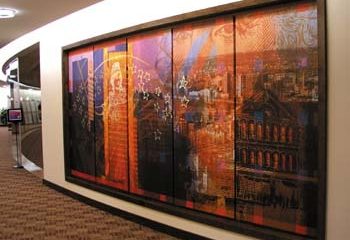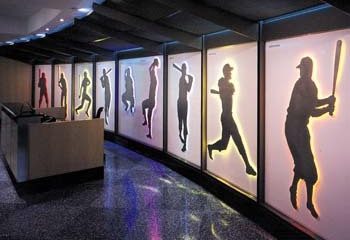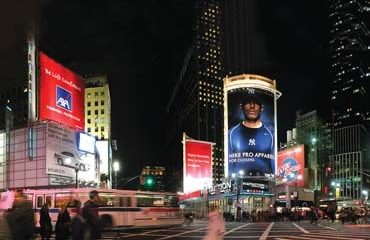Underwriters Laboratories Inc. (UL) is an independent, nonprofit, product-safety testing and certification organization. Each year, more than 17 billion UL marks are applied to products worldwide. Although UL is the most recognized name in testing labs, it s not the only one. If you are (or intend to be) an electric signmaker, you know that you need either UL or another recognized safety and testing organization s listing labels on your electric signs because your local zoning or inspection department will ask you to comply with certain National Electrical Code® standards. If you want to find other testing and certification organizations, the State of Washington s Department of Labor and Industry Website lists numerous accredited testing labs at www.ini.gov/scs/ electrical/testlab.htm.
When finding a testing lab, remember these three things: It must meet OSHA standard (the legal requirement is that the laboratory that performs the testing is a nationally recognized testing laboratory [NRTL]); it must meet National Electrical Code® (NEC) standards (Article 600); and it must be acceptable to the local zoning or inspection agency approving your sign.
An NRTL approval, however, isn t all that is necessary. Your local sign inspectors will consider many other factors. The City of Cincinnati, for example, considers the size and shape of the sign, as well as details of how the sign is to be supported, attached, anchored, connected and braced, including foundations for poles, sign sections, etc. The City also wants information on existing and proposed materials, and design-loading specifications (wind, soil-bearing capacity). Additionally, structural calculations or stamped engineering drawings may be required.
There s more, but most of you know that.
All electrical installations — signs, homes, commercial buildings and horse barns — must conform to applicable NEC requirements, local ordinances and instructions provided by equipment and component manufacturers. The National Fire Protection Assn. (NFPA), Quincy, MA, publishes the NEC, which is written and compiled by electrical engineers, electrical equipment manufacturers, insurance underwriters, fire fighters and other concerned experts.
The NEC contains specific rules and regulations to help safeguard persons and property from hazards arising from the use of electricity. First printed in 1897, the NEC is the bible of the electrical construction industry, and anyone involved in electrical work should obtain an up-to-date copy and refer to it often. Check www.nfpa.org/nec.
Advertisement
Stallcup s 2002 Electric Signs and Outline Lighting book is primarily based on NEC s Article 600. Some see it as indispensable text for electric sign professionals.
I talked to Jim Richards, a UL staff engineer in its San Jose, CA, office, its primary sign-designated office. Jim, a Cal-Poly electrical engineer and 27-year UL employee, is a third-generation Californian. More importantly, he s well known and respected in the sign industry.
Jim says UL focuses not only on signs electrical components, but also on the structural parts that enclose live parts. Interestingly, electrical components receive primary attention from his office. In fact, for your signs to be UL-listed, the components must be from UL s sign-accessory manual.
For a smaller, custom signshop to offer UL-listed signs, someone must first complete and mail an application that has a $1,000 check stapled to it. Upon the application s acceptance, a local UL field representative contacts the shop s owner or manager to set up an indoctrination and training session. Once this is done, the shop becomes authorized to label its signs as UL-listed. The field agent returns routinely, generally after the shop builds 70 UL-listed signs.
I was curious if UL conducted field inspections but learned that, because alterations can occur at any time after an installation, UL considers its approvals as occurring at a moment in time, that is, when the sign leaves the manufacturing plant. That moment ends once anyone modifies the sign. UL does, however, offer inspection programs for refurbishing or retrofitting signs.
Jim says many people underestimate the potential fire risk with electric signs, and this causes misunderstandings. The UL standards, he says, are based upon his agency s knowledge and history. He stresses that some of that knowledge and history come from outside the sign industry and may not make immediate sense to a signmaker.
Advertisement
Grounding, he says, is a problem. It s not uncommon for a service technician to replace a component but not reinstall the ground. Or, and possibly worse, to select a new, easier grounding point that may lessen the local discharge voltage.
I received confirmation of this from Cincinnati s chief sign inspector, Gaylord Poe. Gaylord is the president and chief electrical inspector for IBI, Cincinnati s contract-based inspection agency. Gaylord says that Cincinnati accepts testing labels from certified testing agencies that meet NEC standards. He also says that simple stuff is the problem his inspectors encounter most. They forget to ground properly, he says.


 Tip Sheet4 days ago
Tip Sheet4 days ago
 Business Management2 weeks ago
Business Management2 weeks ago
 Women in Signs2 weeks ago
Women in Signs2 weeks ago
 Real Deal5 days ago
Real Deal5 days ago
 Benchmarks1 day ago
Benchmarks1 day ago
 Editor's Note1 week ago
Editor's Note1 week ago
 Line Time2 weeks ago
Line Time2 weeks ago
 Product Buying + Technology1 week ago
Product Buying + Technology1 week ago















